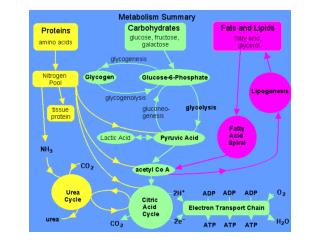

- #WHEN DIGESTED PROTEINS ARE BROKEN DOWN INTO HOW TO#
- #WHEN DIGESTED PROTEINS ARE BROKEN DOWN INTO SKIN#
A low glycemic response means that the glucose enters the bloodstream slowly and steadily. The term we use to describe how quickly a “carb” breaks down and gets into the blood or the effect of the meal or snack you have had to eat is called the "glycemic response" of food, meal or snack.Ī High glycemic response means that the glucose from the food or meal you have eaten enters the bloodstream rapidly. Have you ever noticed that even though you carefully measure your “carb” servings or count your carbohydrate grams, you still cannot always explain your glucose level(s) after a meal?

This helps to prevent spikes in glucose levels after eating.Įating balanced meals and snacks can also help to give us a steady supply of glucose, our fuel source, throughout the day helping us feel more energized and more satisfied. Fiber, protein and fats help to slow down the digestion of carbs and delay their absorption into the blood. So why am I outlining all of this? Because the combination of fiber-rich carbs + lean protein + heart-healthy fats can promote more stable glucose levels. Fat when eaten in modest amounts has a minimal impact on glucose levels, however eating too much fat can cause insulin resistance, which may lead to prolonged high glucose levels Fat slows down the digestive process resulting in a “delayed” rise in glucose levels as it takes a longer time to digest. Foods rich in dietary fat such as avocado, nuts, seeds like flaxseed or chia seed Oils such as olive, canola, soybean, sunflower and peanut oils are all heart health.


Similar to protein, fat does not break down into glucose. It is only when we eat too much fat or the wrong kind that it becomes a problem. That’s right – your body needs fat! Not all fat is bad. Protein foods such as chicken, fish, eggs, cheese, nuts, nut butter, pumpkin seeds, can take anywhere from 3-4 hours to be digested- much slower than carbs.įat is the third group of foods that your body needs. However, proteins do not generally provide glucose when digested, so they have minimal impact on your glucose levels. As a secondary role protein can also provide energy for your body if “carbs” are not available for fuel.
#WHEN DIGESTED PROTEINS ARE BROKEN DOWN INTO SKIN#
Your muscles, organs, bones, skin and many of the hormones in the body are made from protein. Amino acids are building blocks to help build and repair body tissue. Protein supplies the body with something called amino acids. Choose foods with a high fiber content such as whole-grain cereals, bread and crackers grains such as oats, barley, bulgur, and buckwheat acorn and butternut squash cooked peas, beans, and lentils berries and dried fruit and nuts. Carbs with more fiber are digested slower than carbs that do not contain adequate fiber. Some carbs are digested quickly so that glucose can be used by the brain for energy. Most carbohydrate foods from 1-2 hours to be digested. (see How does Fiber Affect Glucose Levels?). Fiber is the third and will be discussed in more detail. Think of glucose like the gas we put in our cars - it's what our bodies prefer to use for fuel! The two basic types of “carbs” are sugar and starches. It's important to understand how each one can impact glucose levels in order to make smart and educated choices when planning meals and snacks.Ĭarbohydrates supply the body's primary fuel or energy source, glucose. All foods are made up of one of or a combination of these three nutrients. Let's talk about macronutrients: carbohydrates, protein, and fat.
#WHEN DIGESTED PROTEINS ARE BROKEN DOWN INTO HOW TO#
When thinking about how to better understand a food's impact on our glucose levels, it's best to start from the beginning. These are just a few examples of questions that many persons with diabetes ask themselves daily, and it can be extremely frustrating when there appears to be a lack of consistency in terms of what foods that we eat affect glucose levels. “Why is it that some foods make my glucose levels high and other foods don't?” “Why does it seem like every time I eat a carbohydrate (Carbs), foods my glucose levels skyrocket?” “How do I know if a meal or snack is going to spike up my glucose levels?”


 0 kommentar(er)
0 kommentar(er)
